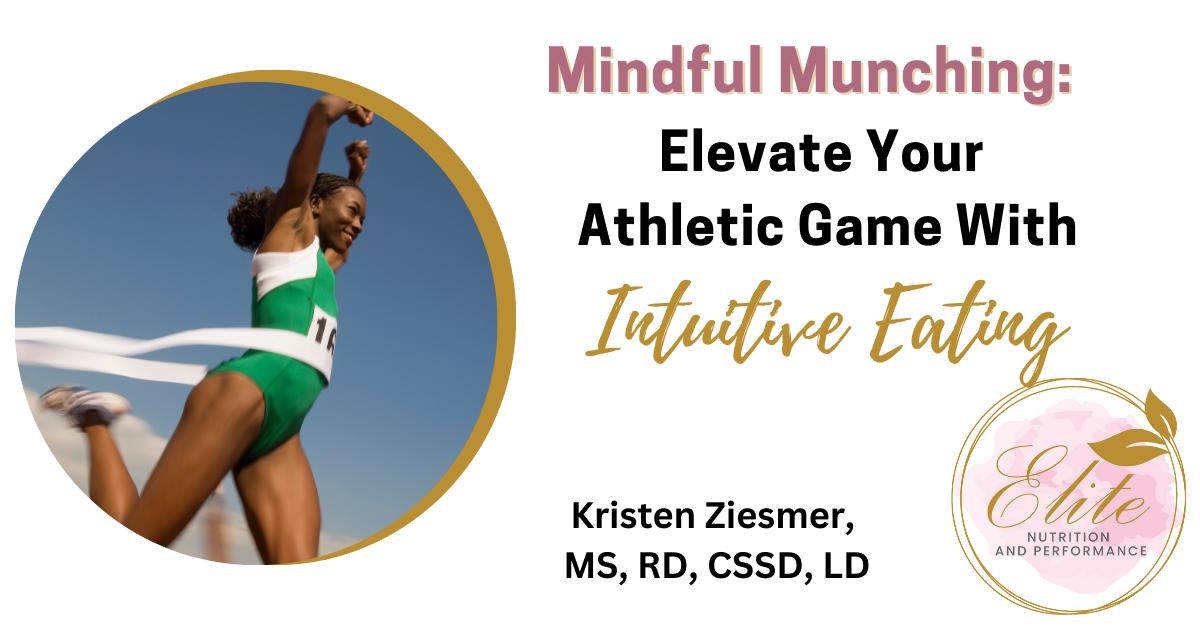You can find freedom with intuitive eating.
Do you wish you could eat normally…
and not have to think about food all the time?
Do you wish you could reach new PRs and know nutrition is the missing link?
Yea that was me too, until I discovered intuitive eating! Check out my other blog, How to Listen to Your Body and Eat Intuitively.
In this video, I share my own story as a young under-fueled competitive athlete, and how discovering intuitive eating was a huge game-changer for me. I also unpack what exactly intuitive eating is, and tangible ways you can implement it in your life, starting today.
My work centers around the science of sports nutrition, combined with intuitive eating. This sustainable approach provides the 1-2 punch that female athletes need to perform at their best, without compromising their health and their relationship with food.
As a sports dietitian for 14 years who has personally overcome my own eating disorder and discovered the freedom of intuitive eating, I offer my clients a unique level of empathy, understanding, and hope for young female athletes who are struggling with their relationship with food and their body.
Share this video with friends or someone you think needs to see this. And join the conversation about these myths with your questions, from wherever you’re watching this, and comment below!
Want more nutrition tips geared toward female athletes? Then join me every Thursday at 12pm Eastern on my Facebook Group, where I provide free training with Q&A!
Click to head over to my Facebook Group and join: Female Sports Nutrition today!
Need help setting up a solid nutrition plan to support your performance and goals?
Contact me to schedule a free 30-minute consultation, so we can discuss your particular situation and goals.
Want to boost your performance? Download my FREE Cheatbook and learn:
* The BEST way to fuel your EARLY morning and ANYTIME workouts!
* My easy-to-make DELICIOUS pre-workout ENERGY GO-TO snack – perfect before a run or bike ride!
* How to SWAP the POWERADES for a quick at-home energy drink – ready in less than 5 mins (shocker, it’s NOT a protein smoothie)!
Download it here: Fuel Your Workout Cheatbook
.
.
.
#Mindful #Munching #Elevate #Athletic #Game #Intuitive #Eating
Source link








